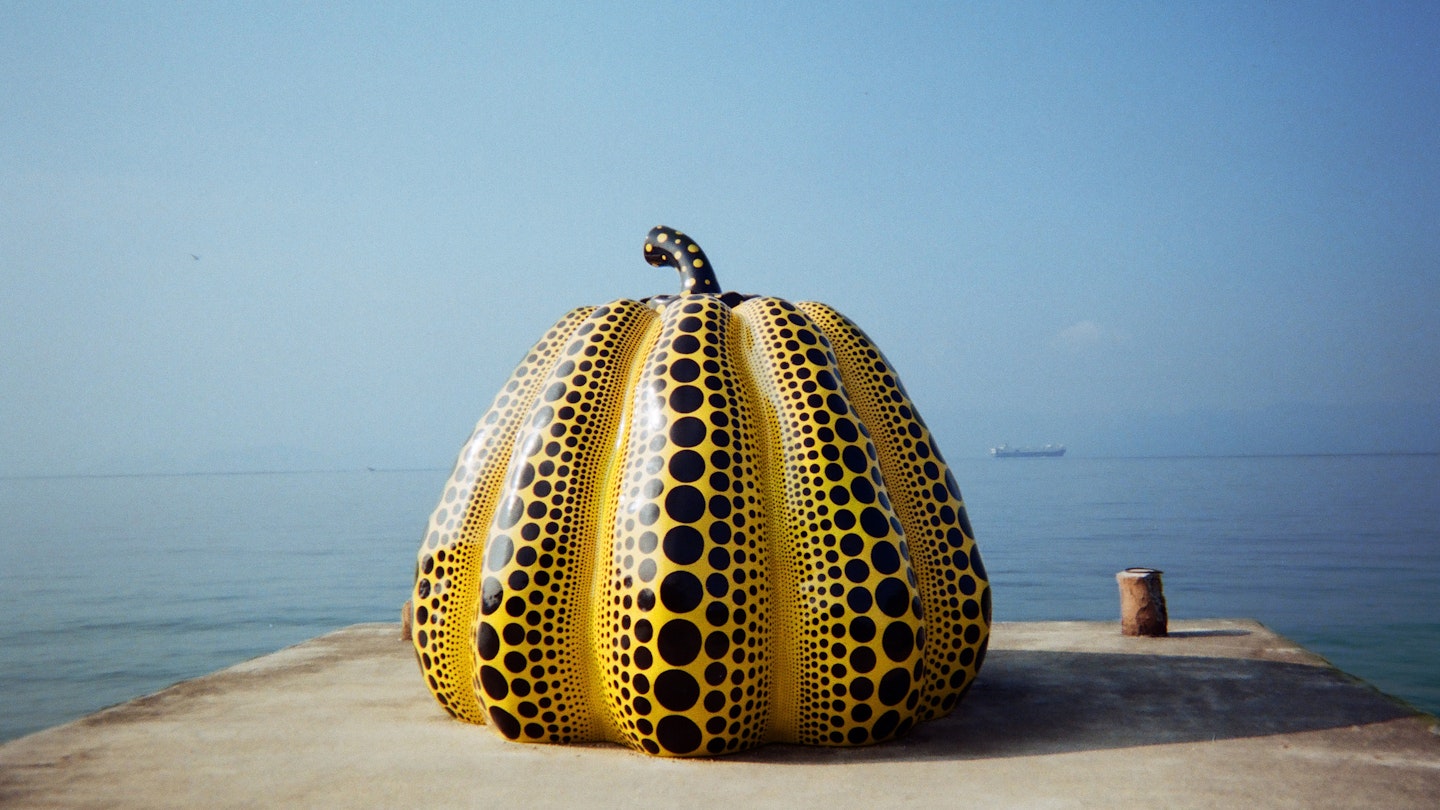Discover Kagawa: Japan’s Hidden Gem of Art and Cuisine
Friendly and fair-weathered Kagawa is Japan’s smallest prefecture, a relatively undiscovered rural getaway full of spiritual hotspots and world-class art. Its distinctive traditional culinary and cultural practices also make it a perfect option for eco-focused travelers seeking a sustainable trip.
Located in Shikoku, the smallest of Japan’s four main islands, Kagawa is decidedly off the country’s usual tourist track. In recent years, however, it has been experiencing increased popularity thanks to a burgeoning contemporary arts scene that has revitalized island communities. The prefecture still retains its traditional heart, with authentic skills passed down through generations and independent businesses striving to revive almost-forgotten crafts.
Community-transforming Art
Kagawa’s most famous artistic location is Naoshima, an island that has transformed from a dwindling fishing community into a world-renowned art hub. Galleries, outdoor installations, and sculptures are dotted along the picturesque coast and further inland among the tranquil forest. Highlights include the Chichū Art Museum, the Benesse House Museum, and the iconic Yellow Pumpkin.
Becoming an ‘art island’ has completely rejuvenated the area, consequently attracting tourists from across Japan and abroad while spurring the development of further creative projects. One notable initiative is the Art House Project, which repurposes abandoned houses and other buildings for artists. They maintain the traditional exteriors while transforming interiors into imaginative spaces for visitors to explore, often inspired by local residents. Notable installations include Minamidera, which plays with perceptions of light and darkness, and Go’o Shrine, which features an optical glass staircase connecting heaven and earth.
Naoshima is not the only island in Kagawa to experience an artistic makeover. Nearby Teshima also boasts intriguing sites, including the Teshima Art Museum and Teshima Yokoo House, which features a modern interpretation of a traditional Japanese rock garden, creatively involving local residents in its design.
Traditional Culinary Delicacies
Shōdoshima, one of Kagawa’s scenic islands, is better known for its culinary traditions than its artistic achievements. Nevertheless, its foodie credentials are helping rejuvenate the area in a similar vein.
Local breweries have been producing soy sauce for over 400 years, utilizing traditional methods to retain natural flavors without additives. The sauce matures in wooden barrels known as kioke, which not only last for over 100 years but also assist in fermentation through naturally occurring microbes. Although this lengthy process is less common today, it is believed to yield superior quality results.
Unfortunately, kioke-making is a dying art, with few skilled craftspeople remaining. Local brewers are rising to the challenge by mastering the craft and teaching the next generation. Visitors to Shōdoshima can tour the Marukin Soy Sauce Museum to learn about this quintessential Japanese product. Additionally, the gift shop offers various unique varieties to purchase and even surprising soy sauce ice cream to sample.
Due to its location in the mineral-rich Seto Inland Sea, Shōdoshima also has a tradition of salt making. Although the industry declined, a new generation of artisan salt makers is aiming to revive it. Producer Toshiki Kaba has updated the original technique using solar power and recycled wood, resulting in a fluffy, distinctly flavored sea salt far superior to ordinary table salt.
Thanks to its Mediterranean-like climate, Shōdoshima is also the birthplace of olive cultivation in Japan. Diners can enjoy olives and olive oil, as well as specialty dishes such as Olive Beef, Olive Pork, and Olive Yellowtail from animals fed with leftover olive leaves, effectively reducing waste.
Inherently Sustainable Crafts
Souvenirs from your trip become even more special when they’re local arts and crafts that support independent businesses. Japan produces many traditional crafts rooted in sustainability and Kagawa is no exception.
Marugame city in western Kagawa produces nearly 90% of Japan’s uchiwa, round paper fans dating back to the Edo period (1603-1868). Crafted from a single piece of bamboo and covered with thin paper or silk, these fans are both beautiful and practical, especially during Japan’s hot summers. The Uchiwa-no-Minato museum offers displays, demonstrations, and workshops for visitors to make their own fans.
Kagawa also ranks among Japan’s leading producers of bonsai trees, particularly in the Kinashi and Kokubunji districts of Takamatsu city, where around 60 bonsai growers lovingly nurture each tree. Visit the Ritsurin Kōen landscape garden to see exquisite bonsai alongside various Japanese plants in a stunning setting.
Another notable craft from Kagawa is lacquerware, which flourished during the Edo period with support from local lords. Traditional techniques are still practiced today and taught at the Kagawa Urushi Lacquerware Institute, focusing on three main methods – choshitsu, kinma, and zonsei, each yielding different styles of lacquer. Elegant products range from chopsticks and tea utensils to decorative boxes, making for beautiful and authentic mementos of your stay in Kagawa.
This story was crafted collaboratively between Kagawa Prefecture and GoTravelDaily. Both parties provided research and curated content to produce this story.





